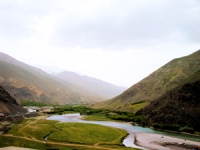Water sharing between Central Asian countries has been conflicting for quite a long time already.
Groundwater resources use and management in the Amu Darya River Basin (Central Asia)
This paper analyses groundwater resources use and management in the socioeconomic context of the Amu Darya River Basin which covers part of the following landlocked Central Asian countries: Afghanistan, Tajikistan, Turkmenistan and Uzbekistan. These agrarian nations for sustaining their vital agricultural productions started to use groundwater during the recent drought years (1998-2001) because of its relatively good quality and quantity and as an alternative to highly mineralized surface waters. Present extent of groundwater resources use is discussed with consideration to their reserves, quality, and institutional management and transboundary aspects within the basin. After the collapse of the centralized water resources management system and infrastructure of the former Soviet Union, new underdeveloped systems are being practiced over the whole Amu Darya River Basin. The critical situation of groundwater management in Afghanistan is also discussed. The document attempts to document the management and use of groundwater in the Amu Darya Basin and present time management realities, with fragmented and weak national and regional regulation on groundwater. Special attention is given to groundwater resources in irrigated agriculture, which increased use in all countries of the basin is due to quick access to underground resources and relatively good quality and quantity.
The following publication is the author manuscript, published in "Environmental Earth Sciences 59 (2010) 1183-1193. For the online version please clikc on the 'Publication Source' link.





